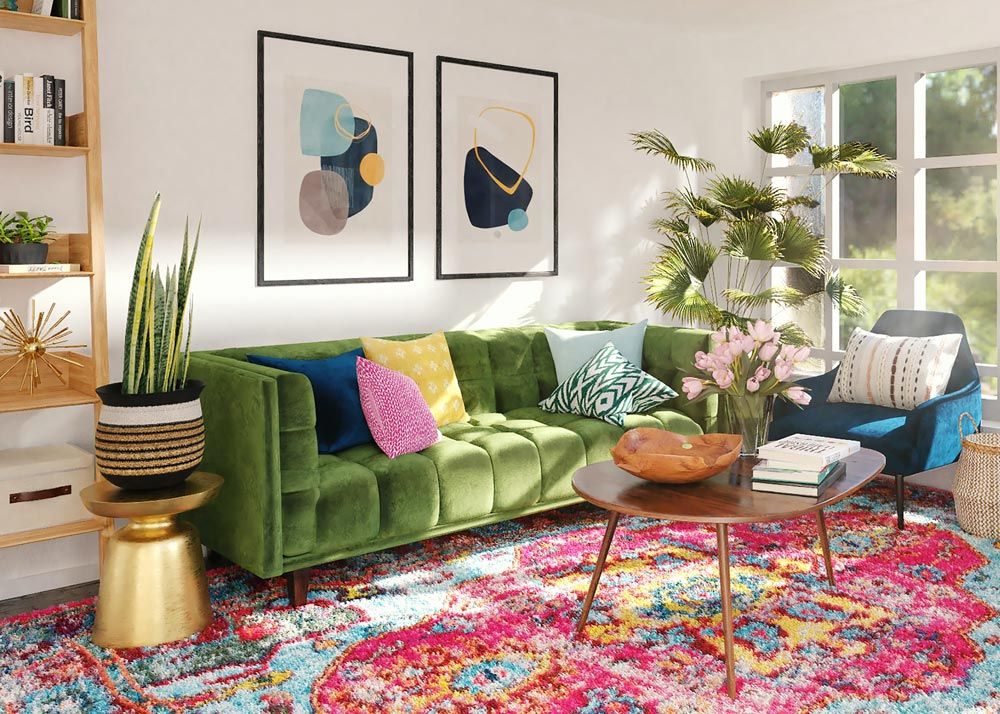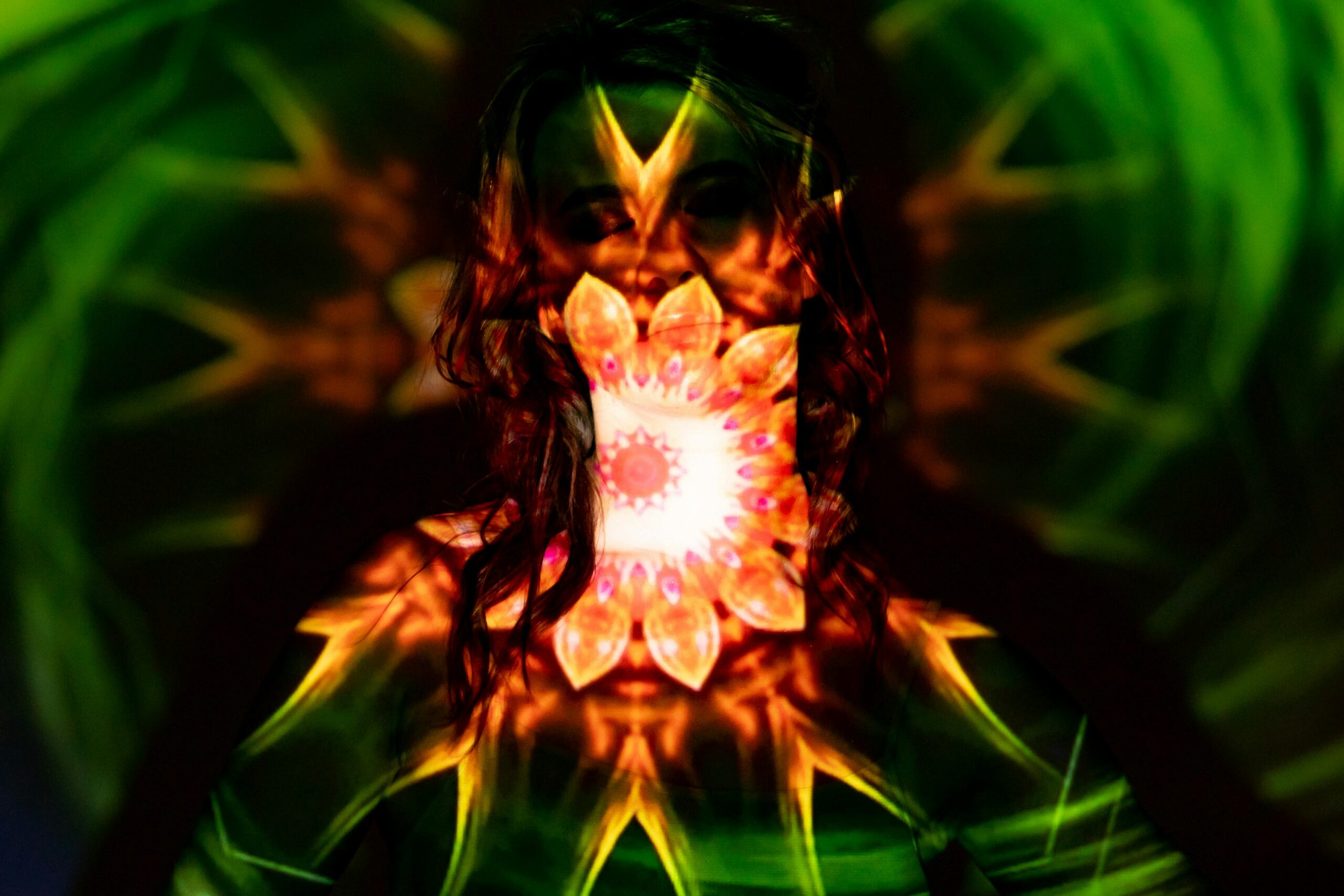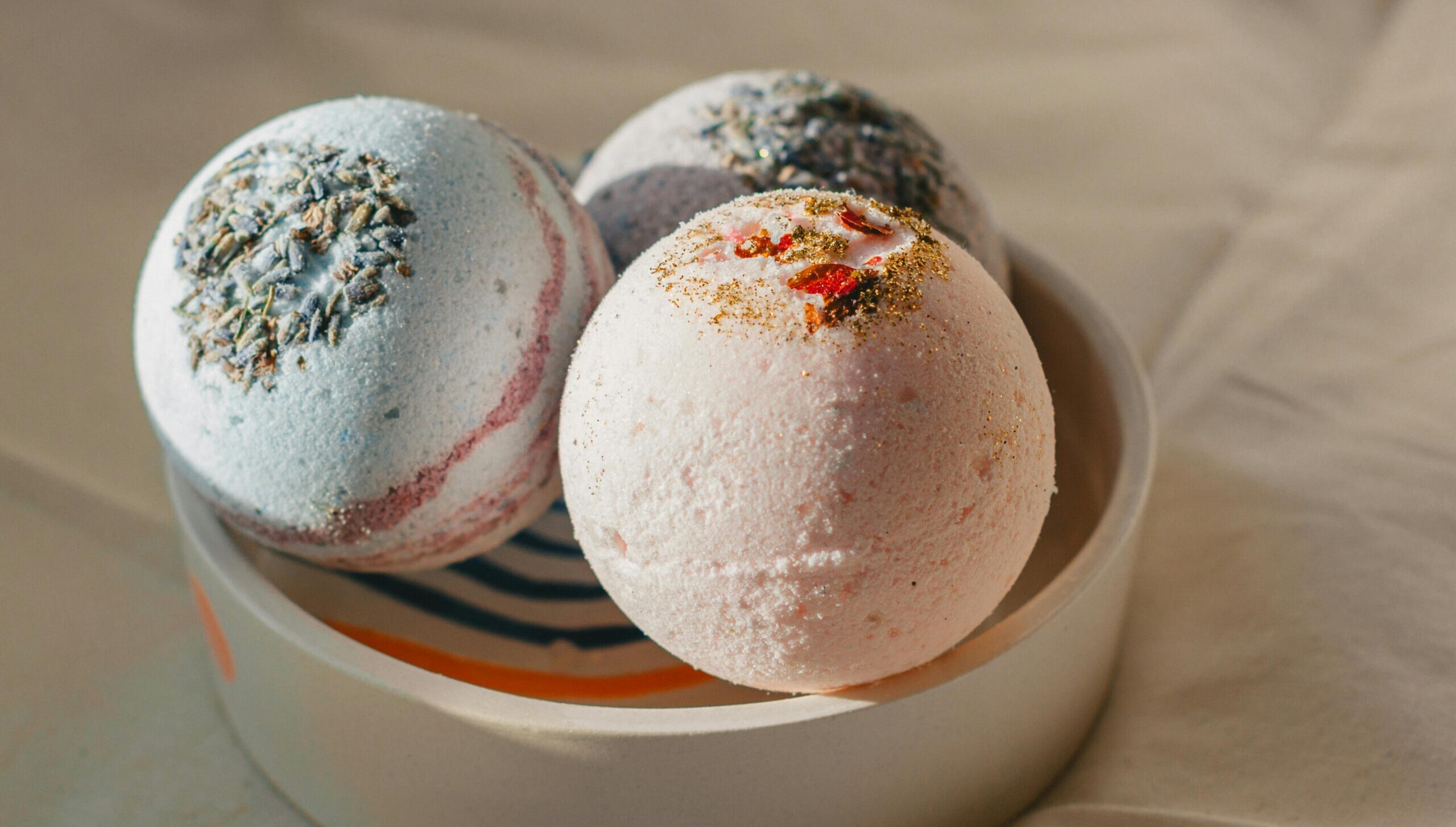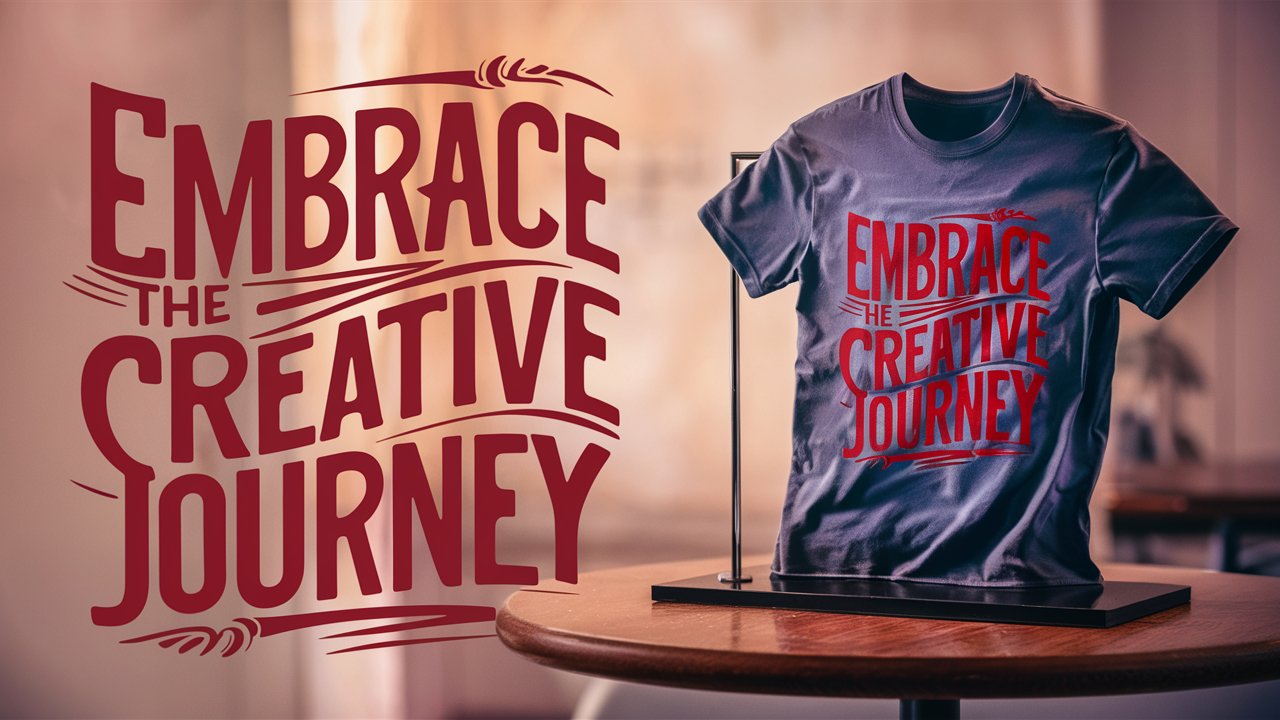Your home should be your sanctuary—a space that feels vibrant, cozy, and uniquely yours. It’s the place where you can truly be yourself, away from the outside world. For years, I adhered to minimalist design trends, but it never quite felt like home. Sure, my space was clean and organized, but something was missing—it lacked warmth, personality, and character. That’s when I stumbled upon eclectic maximalism. This style opened the door to a more joyful, bold, and deeply personal way of decorating. So, I embraced the eclectic maximalist lifestyle and transformed my home. It’s now a reflection of who I am—lively, colorful, and full of soul.
Forget sterile minimalism. Embrace boho style, vintage charm, and vibrant patterns! Here’s a glimpse into my journey and how you can create a home that’s as unique as you are.
Creating a Cohesive Look When Mixing Bold Patterns and Textures
When I first ventured into eclectic maximalism, I was nervous about mixing bold patterns. I worried about creating chaos instead of harmony. But once I began to experiment, I discovered that it’s all about finding a balance. Here’s how I learned to mix textures and patterns without feeling overwhelmed:
1. Start with a Statement Piece
One of the first things I did when redecorating my living room was choose a bold statement piece. It’s amazing how much direction this gives the rest of the room! For me, it was a large, vibrant Persian rug with a mix of deep reds, blues, and oranges. The moment I placed it in the room, everything else started to fall into place. From there, I picked out furniture and decor that complemented its rich colors and textures, allowing it to be the focal point without competing with other elements.
2. Curate a Color Palette
The key to ensuring everything comes together cohesively is a curated color palette. I settled on a palette of rich jewel tones like emerald green, ruby red, mustard yellow, and deep navy blue. These colors feel warm and inviting but still allow for bold patterns to shine. I used the 60-30-10 rule: 60% dominant color (the green and navy), 30% secondary color (red), and 10% accent (gold and mustard). This way, my space feels harmonious without being monotonous.
3. Mix Pattern Scales
I had to experiment a bit with scale. At first, I paired patterns that were too similar in size, and the room felt flat. Once I started mixing larger patterns (like oversized florals on my throw pillows) with smaller, intricate designs (like polka dots on curtains), the space really came to life. It’s the contrast in scale that adds excitement without overwhelming the senses.
4. Balance with Neutrals
It’s so easy to get carried away with bold colors, but I quickly learned that neutrals are essential in grounding the space. I made sure to incorporate neutral tones in the form of my walls (a soft beige), my large furniture pieces (a gray velvet sofa), and neutral textiles (linen curtains). These neutral elements offer breathing room between the bold patterns and prevent the space from feeling too chaotic.
5. Add Texture
Textures are a huge part of why eclectic maximalism feels so cozy. In my living room, I layered soft velvet cushions on the couch, placed a woven jute rug on the floor, and added a few leather chairs for contrast. Each texture adds a layer of warmth and depth to the room, making it feel lived-in and inviting.
6. Repeat Colors Across Patterns
To tie everything together, I made sure to repeat key colors across various patterns. For example, I paired my navy-striped throw pillows with floral prints that had hints of blue. This repetition helped create visual continuity without the patterns feeling disconnected.
7. Layer Patterns Gradually
When I first started incorporating bold patterns, I began with small accessories like throw pillows, blankets, and smaller rugs. This gave me a chance to see how patterns worked together before committing to larger pieces, like wallpaper and furniture. Gradually layering these elements helped me avoid feeling overwhelmed and allowed the room to evolve organically.
8. Use Symmetry
To keep the space from feeling too busy, I used symmetry to bring order to the chaos. I arranged my patterned throw pillows symmetrically on the couch, and I also created balanced displays with artwork on the walls. Symmetry in certain areas of the room gave it structure, which made the bold patterns and textures feel more intentional.
Common Mistakes to Avoid When Mixing Bold Patterns
As I embarked on my journey of eclectic maximalism, I learned a lot from my mistakes! Here are some things I wish I had known before diving in:
1. Using Too Many Colors
When I started, I was tempted to throw every color I loved into the room, but quickly realized that it could make the space feel chaotic. Too many colors competing for attention created visual clutter. Instead, I chose 3-5 colors and made sure they complemented each other. This helped the room feel lively without overwhelming my senses.
2. Mixing Patterns of the Same Scale
I learned this one the hard way! Early on, I made the mistake of pairing two large, bold patterns together. It made the room feel busy and unbalanced. Once I started combining large-scale patterns with smaller, intricate ones, everything began to fall into place.
3. Skipping Solid Colors
Solid-colored pieces are a must for creating balance. When I first started, I didn’t realize how important they were. Now, I always make sure to include neutral solids to give my eyes a rest from all the patterns. For example, my gray sofa acts as a grounding piece in the room.
4. Overloading the Room with Patterns
Less is more when it comes to patterns. In the past, I tried to fit every pattern I loved into the room, but I quickly learned that it’s better to limit yourself to three or four distinct patterns. This keeps the space feeling curated rather than chaotic.
5. Ignoring Contrast
The first few times I mixed patterns, I didn’t think enough about contrast. I’d pair similar patterns together, and they would just blend in. Once I started incorporating contrasting textures and colors (like florals with stripes or velvet with linen), the room became much more visually interesting.
6. Choosing Multiple “Hero” Patterns
At one point, I tried to feature multiple bold, attention-grabbing patterns in the same space. It was overwhelming. Now, I let one pattern be the hero (like my statement rug) and allow the others to complement it, playing supporting roles.
7. Forgetting a Neutral Base
I was so excited about the bold patterns that I forgot to establish a neutral base. Without that calming backdrop, the patterns felt disjointed. I now make sure to incorporate neutrals in my furniture, walls, and larger pieces to create a foundation for the bold patterns to shine.
8. Over-Themed Patterns
I made the mistake of overdoing a particular theme—like using too many “boho” or “vintage” items. It can start to feel forced. Now, I let the space evolve naturally, allowing pieces to come together through color, texture, and personal meaning rather than a strict theme.
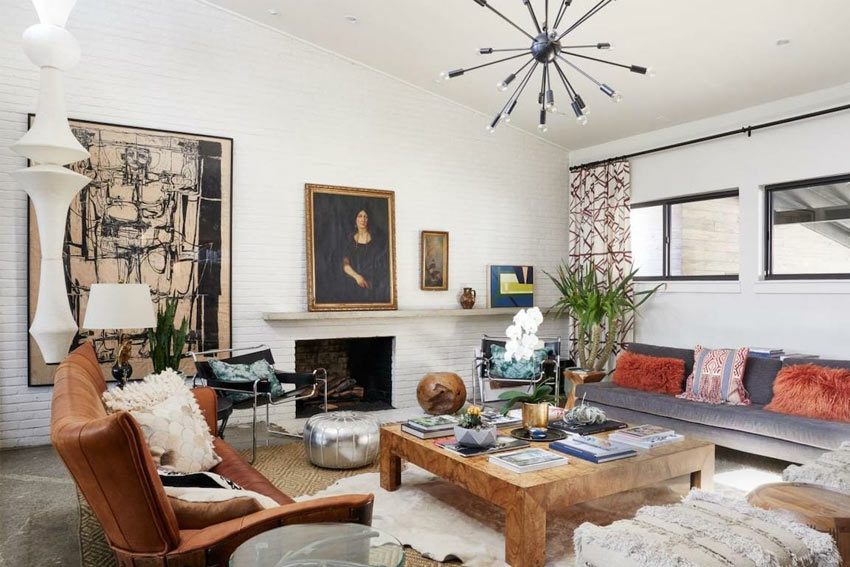
Balancing Bold Patterns with Neutrals
Neutral colors don’t just serve as a backdrop—they play a vital role in balancing bold patterns. Here are the strategies I used to balance bold patterns with neutrals:
1. Start with a Neutral Base
I started with neutral walls and large furniture pieces—like my soft beige walls and gray velvet sofa. This allowed the colorful patterns to take center stage, while the neutrals helped anchor the space and prevent it from feeling too overwhelming.
2. Incorporate Neutral Textures
Neutral textures—like a jute rug, linen curtains, or a wooden coffee table—help break up the intensity of bold patterns. I love how these elements add richness without distracting from the patterns. The combination of textures makes the space feel both cozy and dynamic.
3. Use Color Blocking
I visually separated zones in my open-plan space with neutral walls and furniture. For example, the living room’s patterned rug is balanced by neutral-toned walls, while my patterned pillows rest on a neutral-colored sofa. This gives each zone a distinct, balanced feel.
4. Create Contrast
By combining smooth, neutral surfaces (like a beige wall or a white bookshelf) with textured neutrals (like my jute rug or leather chairs), I was able to enhance the contrast in the room. This contrast ensures that the bold patterns never feel flat.
5. Subtle Variations in Neutrals
Rather than using just one neutral color, I experimented with different shades. Mixing light gray with warm taupe and soft cream added depth without overwhelming the space.
6. Use Neutrals to Define Zones
I love using neutral elements to define different areas within my open-plan living space. For example, in my living area, I paired a patterned rug with neutral walls and sofas, which helped separate the space from my adjacent dining room with different bold patterns.
7. Layer Patterns Gradually
When I first introduced bold patterns, I started small—just with accessories like throw pillows and curtains. Once I felt more comfortable with the combination, I layered in larger patterned rugs and artwork. This gradual approach helped me fine-tune my choices without going overboard.
8. Bring in Natural Elements
Adding natural elements like wood, stone, or plants in neutral tones helped balance the bold patterns. It also brought a calming, organic vibe to the space. My wooden coffee table, potted plants, and a stone lamp provide a sense of grounding amidst all the vibrant colors.
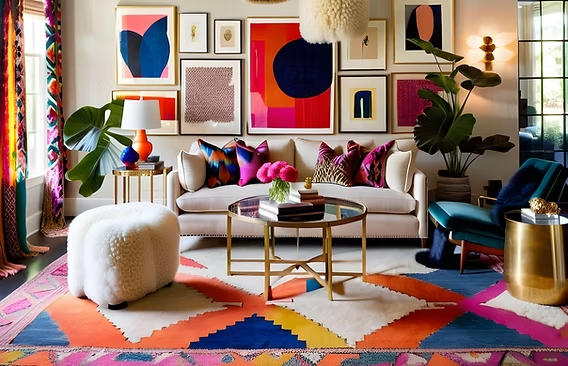
Why Eclectic Maximalism?
Minimalism is sleek, but it often feels cold, sterile, and impersonal. A home should feel lived-in, warm, and full of personality. Eclectic maximalism is a celebration of individuality, where every piece of furniture and decor has a story to tell. It’s a visual representation of who you are and the things that bring you joy.
My Eclectic Home
As I mentioned, my living room is a perfect example of eclectic maximalism in action. I combined modern and vintage pieces—like a gray leather couch, vintage Persian rugs, and dark wood furniture—into a space that feels cozy, inviting, and uniquely mine. Every piece I chose serves a purpose: some evoke nostalgia, while others bring fresh energy to the room. It’s a blend of the old and the new—perfect for anyone who loves the charm of vintage finds combined with the freshness of contemporary design.
Tips for Decorating Your Eclectic Space
- Mix Patterns and Textures: Combine bold florals with geometrics, and rich textures like velvet, leather, and woven fabrics. Mix large-scale patterns with smaller ones for contrast.
- Embrace Vintage Finds: Thrift stores, estate sales, and auctions are goldmines for unique vintage pieces. I’ve found some of my favorite treasures this way!
- Play with Color: Don’t be afraid of jewel tones or vibrant hues! Create harmony by choosing a consistent color palette that complements the bold patterns.
- Showcase Your Personality: Display personal collections like travel souvenirs or family heirlooms. Let the room reflect your life and passions.
- Keep It Cozy, Not Cluttered: Avoid overwhelming the space by keeping things organized. Use trays, shelves, and bins to keep everything neat while maintaining a cozy atmosphere.
Cost-Saving Tips for Eclectic Decor
Decorating on a budget? It’s totally possible! Here are some cost-effective ways to embrace eclectic maximalism:
- Thrift Stores: You’d be amazed at the treasures you can find at thrift stores.
- DIY Projects: I’ve repainted furniture and reupholstered old chairs to give them new life.
- Estate Sales: Vintage pieces at lower prices than retail stores—score!
- Swap Decor: Trade items with friends to get fresh looks without spending anything.
Be Bold, Be Yourself
Eclectic maximalism is all about freedom. There are no rules—only the ones you create. Your home should be an authentic reflection of who you are. So, let’s leave behind the cold minimalism and embrace a space filled with life, color, and personality. After all, your home is where you relax—it should make you feel happy every time you walk through the door! A Vision Board might help you with the planning.

What is Eclectic Maximalism in Home Decor?
Eclectic maximalism is a decorating style that combines bold patterns, vibrant colors, and a mix of vintage and modern pieces to create a warm, personalized, and dynamic home environment. It’s about embracing creativity and individuality.
How Can I Create a Cohesive Look with Bold Patterns and Textures?
To create a cohesive look when mixing bold patterns and textures, start with a statement piece, curate a color palette, mix pattern scales, and balance with neutrals. Layering textures and repeating colors can help tie everything together.
What Are the Best Colors for an Eclectic Maximalist Home?
The best colors for an eclectic maximalist home are rich jewel tones (emerald green, ruby red, sapphire blue) combined with earthy neutrals (beige, gray, taupe). Creating harmony between bold hues and calming tones will make the space feel balanced and inviting.
How Do I Mix Vintage and Modern Decor in My Home?
Mixing vintage and modern decor involves combining timeless pieces with contemporary styles. For example, pair antique furniture with modern accents, or add vintage rugs to sleek, minimalistic rooms. The key is finding complementary colors and textures to create a seamless blend.
Can I Use Eclectic Maximalism in Small Spaces?
Yes! Eclectic maximalism can work in small spaces if done thoughtfully. Use bold patterns, textures, and colors in small doses, and be strategic with your furniture layout. Focus on layering accessories like throw pillows, rugs, and wall art to add personality without overwhelming the room.
What Are Some Cost-Effective Ways to Achieve Eclectic Maximalism?
Thrift stores, estate sales, and DIY projects are great ways to find affordable eclectic pieces. Repurpose old furniture, swap decor with friends, and incorporate vintage items to create a high-end, eclectic look without breaking the bank.
What Are the Key Elements of Boho Style in Eclectic Maximalism?
Boho style in eclectic maximalism is characterized by warm, earthy tones, layered textiles, and eclectic, free-spirited patterns. Incorporating vintage furniture, woven rugs, plants, and global-inspired accessories can help bring the boho vibe into your maximalist home.
How Can I Personalize My Eclectic Maximalist Home?
Personalize your eclectic maximalist space by incorporating items that have personal meaning, such as travel souvenirs, family heirlooms, or personal collections. Create a gallery wall of mismatched frames and display quirky decor pieces that reflect your unique taste and personality.
